Volatility is what makes penny stocks attractive to traders. These stocks can skyrocket 100% or more in a single session—just as easily as they can crash to zero. The key to trading them successfully isn’t just chasing the biggest movers. It’s about understanding liquidity, trading volume, and the catalysts driving the action. The best setups come when the right stock has the right news at the right time.
2025 has already seen massive swings in sectors like crypto, biotech, and technology. Bitcoin-related stocks have surged with Trump’s help, while biotech stocks have spiked on FDA announcements. With these large-cap moves comes penny stock speculation, giving traders more opportunities to spot emerging trends. But just because a stock is moving doesn’t mean it’s worth trading—understanding price action and trading strategies is critical.
Traders who chase stocks blindly usually end up bag-holding as momentum fades. Instead of following hype, focus on risk management and trading plans. My best trades happen when I’m prepared, not when I’m gambling. Volatility can be an opportunity, but only if you know how to use it.
Table of Contents
- 1 What Is Stock Volatility?
- 2 What Are High-Volatility Penny Stocks?
- 3 Why Volatility Is Important
- 4 What Affects Stock Volatility?
- 5 3 of the Most Volatile Penny Stocks of 2025
- 6 How to Find Volatile Penny Stocks
- 7 Examples of High-Volatility Penny Stocks
- 8 Key Benefits of Trading Volatile Stocks
- 9 Trading Challenge
- 10 Things to Understand Before Investing in Volatile Stocks
- 11 The Bottom Line on Volatile Penny Stocks
- 12 Frequently Asked Questions
- 12.1 How Does Market News Affect Volatile Penny Stocks?
- 12.2 Can I Get Rich by Investing in Penny Stocks?
- 12.3 Are Volatile Penny Stocks a Good Investment for Beginners?
- 12.4 How Do Brokers and Exchanges Affect Penny Stock Trading?
- 12.5 What Role Do Speculation and Market Trends Play in Penny Stocks?
- 12.6 How Does Portfolio Management Impact Penny Stock Trading?
- 12.7 Why Are Penny Stock Trading Strategies More Important Than Stock Picks?
- 12.8 What Financial Tools Can Help Traders Succeed in Penny Stocks?
- 12.9 What Factors Should Traders Consider Before Trading Penny Stocks?
What Is Stock Volatility?
Stock volatility is extreme price fluctuations in a short amount of time. A volatile stock has a wide swing in price throughout a day, a few days, or maybe longer.
So instead of a stock that moves 50 cents to 51 cents in a day, volatile penny stocks might move 50 cents to $1 a day or more. (I’ll show you some great examples in a bit.)
These stocks can be a great way to grow a small account. But they also can mean staggering losses if you’re not careful. Always remember to follow rule #1 and cut losses quickly.
What Are High-Volatility Penny Stocks?
So … what is high volatility in penny stocks? To help you understand, let’s break it down piece by piece.
Volatility: This refers to a stock’s price change within a finite period of time, such as a day, week, or month. If a stock price is spiking high and low and moving quickly and erratically, it’s considered volatile. And volatility can move in either direction.
Penny stocks: Low-priced stocks. They’re not all sold for pennies. Personally, I consider a penny stock anything trading for $5 per share or less.
In a nutshell, volatile penny stocks are low-priced stocks that experience unusually rapid and significant price fluctuations. Typically, this is within a short period of time — these big shifts can occur in a single day, within hours, or even in minutes.
Why Volatility Is Important
Trading volatile penny stocks can potentially be important for growing your account.
I use the volatility of these stocks to my advantage. And here’s the thing … I don’t have to catch the bottom and the top of the price moves. I can be in and out within a few minutes for a profit.
That’s why I love volatile penny stocks for day trading. I take the meat of the move, then I’m on to the next opportunity. Taking small gains can add up over time — as long as you keep your losses small.
As you get more confident and comfortable with your strategy, you can potentially increase your position size over time.
What Affects Stock Volatility?
Two things that create volatility in a stock are the float and volume — or supply and demand.
The float is the number of shares available to be traded by the public — or the supply. And volume represents demand.
A low float means there’s a limited supply. If demand for the shares increases due to a catalyst, the stock price can increase quickly.
On the flip side, if there’s low demand for shares and a lot of sellers, the stock price will drop.
If a stock has a large number of shares available to trade, it will take more volume to get the price moving. It can still happen. Especially with low-priced stocks — traders can get more bang for their buck.
Volatility can also be caused by stop losses. A stop loss is an order you place to sell at your risk level. It sits as a sell order but doesn’t execute until that price is hit by the bid or ask.
Traders use it to protect themselves from large losses if they can’t monitor their position during the day … I personally don’t use stop-loss orders.
The problem? Most traders put them in at the same level. So when the stock dips down to that level, tons of sell orders get executed. All that selling can create a steep drop in the stock price FAST.
How fast? Let’s look at some examples of volatile penny stocks right now…
3 of the Most Volatile Penny Stocks of 2025
We’ve already seen crazy volatility in this year’s market. There are tons of opportunities — if you’re prepared.
Check out my list of the best penny stocks under $1 here.
Here are a few examples of some of the most volatile penny stocks of 2025. Some of them spiked out of penny stock territory for a bit.
There’s no guarantee I’ll trade any of these stocks. I’m watching them to see if they match my preferred setups — only then will I trade them.
But with these sketchy stocks, most will end up where they started when all the hype fades. Remember to take profits and never hold and hope …
Jet.AI Inc (NASDAQ: JTAI) — The AI Data Center Penny Stock With the Yo-Yo Price Action
My first penny stock pick is Jet.AI Inc (NASDAQ: JTAI).
On February 14, JTAI announced that it would be acquired by flyExclusive through an all-stock transaction.
The stock spiked 350%* after the news was announced. And the intraday stock charts show a lot of volatility.
As a result, I’ve been able to trade this stock four times since the news came out. Here’s an example from the first day of the spike:

The chart still shows us intraday volatility.
Partially because the float is only 572k shares …
A low supply of shares, anything below 10 million, will help prices spike higher when demand increases. It’s a basic law of supply and demand.
The price already bounced off of $5 on February 24. Keep an eye on those major support levels.
Rigetti Computing Inc (NASDAQ: RGTI) — The Quantum Computing Sector Leader I’m Watching for the Next Run
My second penny stock pick is Rigetti Computing Inc (NASDAQ: RGTI).
This is a quantum stock that plunged in early January, alongside the rest of the sector.
The selloff on these quantum computing stocks happened in response to Jensen Huang’s comments about the sector on January 8.
The NVDA CEO mentioned that the market is still many years away from true quantum computers. And the sector took it as a massive gut punch.
IonQ’s earnings report on February 26 was another gut punch. IonQ beat revenue expectations, but the numbers also reminded traders that real profits are still way off in the future. RGTI dropped immediately in sympathy — falling from the low $10s to just above $8 — a level it hasn’t traded at since mid-January.
I’m still watching this sector because of its initial volatility. Past spikers can spike again.
Plus, on February 19, Microsoft announced an extremely bullish catalyst for the sector. Look at the heading below:

The chip expects to bring quantum computers to the market in “years, not decades”.
And Amazon announced their own quantum computing chip a few days later.
The sector bounced a bit after the announcement but it has yet to regain the momentum we saw in late 2024.
It could perk up at any time.
More Breaking News
- Is It Too Late to Buy Sandstorm Gold?
- Albemarle’s Stock Value Adjustments Amid Analyst Reevaluations
- Reddit’s Recent Roller Coaster: What’s Next?
MicroAlgo Inc (NASDAQ: MLGO) — The Short Squeeze AI Penny Stock
My third penny stock pick is MicroAlgo Inc (NASDAQ: MLGO).
On Friday, February 21, we watched MicroAlgo Inc. (NASDAQ: MLGO) spike 910%*! From less than $2 per share to over $11 per share.
I wasn’t surprised. We see a massive short squeeze like this every month. Among smaller squeezes from week to week.
Look at my post below from the day of the squeeze:
Now $MLGO is up 790% on the day, congrats to allllll longs, I sold wayyyyyy too early, but it's also very scary to trade….sooooo many big wins from https://t.co/occ8wKmlgm students, its inspiring.
Study https://t.co/10xyf95a6V to learn alllll you can about BIG short squeezes! https://t.co/gZwIAYUo1w pic.twitter.com/ubRnO4lv3m
— Timothy Sykes (@timothysykes) February 21, 2025
It can be difficult for new traders to recognize a short squeeze …
Usually, there isn’t a visible catalyst. That’s what makes the squeeze so big.
When there isn’t a catalyst to push prices higher, short sellers become even more stubborn about their positions. They keep reentering at the highs and they keep getting blown up.
Look for stocks spiking more than 100% on the day without any news.
It also helps if the stock has a low float. The low supply of shares will exacerbate the short squeeze issue.
For example, last week MLGO didn’t have a catalyst. And StocksToTrade shows that the float was only 6.3 million shares.
It was a perfect short squeeze stock.
How to Find Volatile Penny Stocks
Good news: finding volatile penny stocks is not rocket science. Start with these tips…
#1 Figure Out Your Risk Tolerance
This is important when trading volatile penny stocks.
Here are two things to consider regarding risk tolerance and low-priced stocks…
What’s your goal? If your goal is to grow a small account trading with a smart set of rules, volatile penny stocks could be right for you.
How big is your account? If you have a small account, you need to start slow, take small positions, and work your way up incrementally.
Paper trading can be a great tool for traders to explore volatile stocks. It’s a way to virtually trade stocks. It’s just like real trading, but without real money.
You can paper trade to test out techniques before risking your hard-earned capital. This can help you gain confidence and experience.
#2 Use a Stock Screener
A stock screener helps you locate stocks to fit your trading style, risk tolerance, and trading prowess. You can divide stocks by sector, percentage gainers, and focus on float and volatility.
I use StocksToTrade. This platform is intuitive and includes tools to help you find stocks that fit your strategy. And I helped design it, so it’s great for low-priced stocks.
#3 Create Your Penny Stocks Watchlist
Your shortlist of penny stocks you’re considering trading is your watchlist.
How you track your watchlist is up to you. For example, you might choose to maintain and monitor several on your trading platform, like StocksToTrade.
Every trader is different. You can learn more about how my top student Tim Grittani found his own watchlist method in this video.
To clarify, your watchlist is NOT a list of stocks you’ll definitely trade. It’s a list of stocks you’ll consider trading if and when they meet your specific criteria.
Find out which stocks I’m watching every week. Sign up for my no-cost watchlist here.
#4 Technical and Fundamental Analysis
You want to find the stocks that have a reliable pattern, good fundamentals, and high volatility. Your technical and fundamental analysis can help you here.
Fundamental analysis is all about the company’s financials, news releases, and future plans. You look at things like earnings reports and its overall stability. This can affect the stock price now and in the future.
Technical analysis is where you hit the charts and look at the historical data behind the stock’s price movement. When you look at its chart, can you see distinct patterns? I love patterns and consider them one of the most important things when choosing stocks.
Be sure to look at daily, weekly, and yearly charts to try to discern any patterns that look like they might be repeating.
Do this for all of the stocks on your watchlist, you probably have some favorites emerging. Hopefully, they have high volatility and clean patterns.
If you have a few really strong contenders, you may want to outline a trading pattern for each stock. That way if the setup is there, you’ll be ready to execute the trade. You gotta be prepared.
#5 Follow Your Stock Indicators and Favorite Patterns
Next is the hard part: the watchful waiting. You have a strong watchlist with a few strong contenders and trading plans with entries, exits, and stop losses.
Now, you wait and see if the stocks hit your criteria.
It’s important to keep monitoring what happens with a stock — the market is ever-changing. A stock could move and be more appetizing as a trade, or it could make you want to walk away.
Here’s what’s really key: Even if you never trade a stock on your watchlist, you can always learn something from watching it.
#6 Look for News Catalysts
Volatile penny stocks have catalysts. So you gotta keep up with the news.
Trading platforms like StocksToTrade link to the latest headlines right on the ticker’s page.
If you love catalysts and how they can move stocks, you’ll love StocksToTrade’s newest add-on feature, Breaking News Chat. Two highly seasoned market pros watch all the news and alert members on the news that matters. Learn more about that here.
Now, if you’re waiting for an entry point for a trade and you hear big news that the company has a big new merger or an exciting new hire, this could be the time to execute your trade.
On the other hand, negative news might make you rethink the trade or consider going short.
Just because a stock is on your watchlist doesn’t mean you ever have to trade it.
Sometimes a catalyst will disrupt the pattern. It’s OK to walk away. Sometimes the best trade is no trade.
#7 Improve Your Trading Skills
When you improve your trading skills, it’s like a rising tide that lifts all boats. So the caliber of your trading techniques, including finding worthwhile highly-volatile penny stocks, will improve.
I have tons of educational resources on day trading. A lot are even free, like this penny stock guide and my YouTube channel. Take the time to learn the basics so you can focus on trading smarter every day.
Examples of High-Volatility Penny Stocks
What do you look for with volatile penny stocks? Here are some key characteristics with examples…
Rapid Price Movement
These stocks can spike FAST, even within the course of a day.
These are the stocks that day traders love, as they provide opportunities for potential gains. Like Sonasoft Corp. (OTCQB: SSFT) on June 11. The stock was running on news of a partnership with Google Inc.
When a 15-cent stock doubles in less than an hour, that’s a good percent gain. Check out the chart:
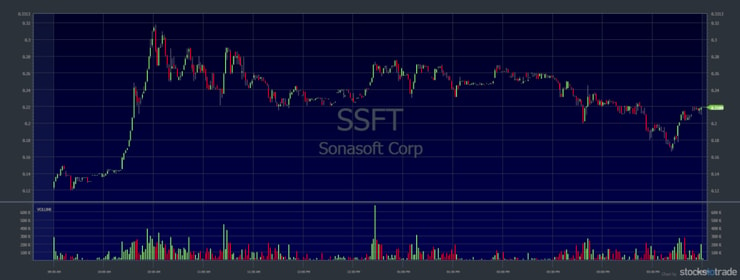
Biggest Gainers and Losers
A big gainer or loser could be a volatile penny stock. That won’t always be the case … The right catalyst could cause a one-off price fluctuation.
Let’s look at Technical Communications Corporation (NASDAQ: TCCO) as an example. In December 2019, it reported quarterly earnings. The stock traded between $4.80 and $10.49 during regular market hours.
The stock moved $1 in a minute multiple times throughout the day.
Yes, that’s impressive. Again, preparation is everything. Trading volatility can be stressful. Don’t get caught on the wrong side of these moves. Look at the intraday volatility…
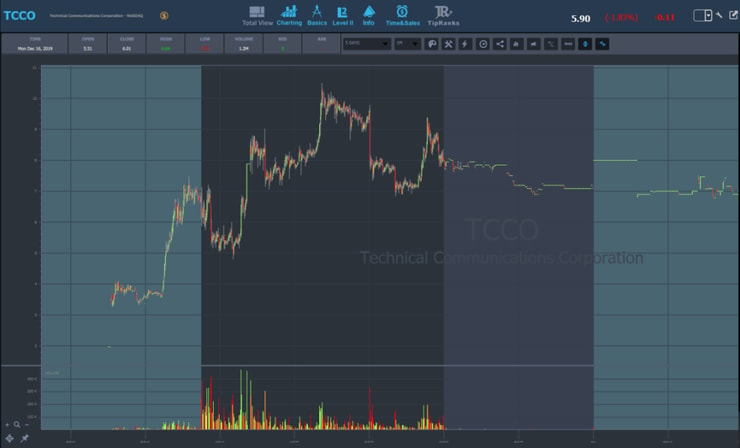
Activity
If a stock isn’t moving much, there are few buyers and sellers. There’s no volume and no interest. Don’t trade stocks with no volume. If you take a large position, you could find yourself stuck in the trade.
With little activity on the stock, there’s likely little volatility. So if you’re looking for volatile penny stocks, you gotta consider volume and activity.
Emerging sectors like psychedelic stocks can supply the most predictable volatility sector-wide. Emerging sectors are emerging because their stocks aren’t overly profitable yet — but traders in these sectors have high hopes for the future. Check out my list of the best psychedelic stocks to see the landscape of this high-potential sector!
Key Benefits of Trading Volatile Stocks
This is important: volatile stocks are riskier than more stable and slow-moving stocks.
But all trading and investing is inherently risky. I’ve done well in penny stocks because I educated myself on how they move. I trade by a set of rules. And I love volatility, even though I’m a conservative trader.
Trading in the Robinhood age has been insane with volatility — and I’m having my best trading in my life. Nope, my results aren’t typical. I’ve been at this for over 20 years. To me, the real question is how you can learn to trade smarter through it.
Start with my no-cost two-hour “Volatility Survival Guide.” It can help you in this crazy volatility and in volatile markets to come. Now, let’s look at some pros for trading volatile stocks…
Opportunities for Traders With Small Accounts
If you have a small account, high-volatility penny stocks can provide you the opportunity to grow a small account.
This is how I earned my money, and it’s the method of trading I focus on most as a teacher with my Trading Challenge students.
And it works in bull and bear markets. How? You have to be willing to embrace volatility in stocks.
With volatile stocks, it’s about following trends, patterns, and a solid trading plan. This is what I teach in my Trading Challenge. The overall market doesn’t matter. It’s your ability to follow the price action and patterns, mitigate risk, and make smarter trades.
Ride Momentum of Undervalued Stocks
Sometimes, stock prices go down for reasons that have nothing to do with the company in question. It could be the market. Or there could be a negative catalyst affecting one company that brings down other stocks in similar sectors.
You gotta do your research if you want to ride the momentum as undervalued stocks rebound and make huge gains.
Attractive Entry Prices
Let’s be real. One huge advantage of penny stocks is their low price. They’re accessible to traders of all levels.
This can make it not only possible but highly tempting to just buy a ton of shares and see what happens. But I want you to take a more calculated approach.
You need to put together a detailed trading plan. Otherwise, you’re just gambling. It’s important to set up good practices for your very first trade and every trade after.
Scaling Up
The basics of picking stocks are the same no matter the share price.
You need to look at the company with fundamental research and at the stock’s action with technical research. This is part of how you identify stocks to trade.
As your knowledge and account both grow, you can scale up these techniques. This means you can potentially apply the skills you develop trading volatile penny stocks to larger positions in the future.
And if you’re ready for the next step in your trading, apply for my…
Trading Challenge
Can you teach yourself how to trade without assistance? Yes, but be prepared to make a lot of mistakes. I say this with confidence — I’m self-taught.
Not all mistakes are bad, especially if you learn from them. But you don’t have to learn every mistake the hard way.
My Trading Challenge is a mentor-based program where I teach students how to trade. My students can benefit from my trading techniques and experience. They can find out how to avoid the mistakes I made while I was learning.
It’s an immersive approach where you learn as you trade (or paper trade). I want to teach you how to set up a strong foundation as a trader.
You’ll learn the art of creating a watchlist and how to identify patterns. Most importantly, you’ll find your own trading style.
You’ll never be right all of the time, but by taking part in my Challenge you can establish smart trading practices. It takes a ton of dedication, commitment, and discipline. Up for the Challenge? Apply now.
Things to Understand Before Investing in Volatile Stocks
Volatility isn’t just about big gains—it’s about big risks. If you don’t understand how fast penny stocks move, you’ll get burned. These stocks trade on lower liquidity, which means price swings can be extreme. A stock might hit new highs in the morning and crash by the afternoon. Traders need to be ready for these shifts, not caught off guard.
Market trends, economic factors, and industry shifts all play a role in volatility. ETFs tracking small-cap stocks, crypto movements, and global finance news can influence penny stock sentiment. Interest rate changes and inflation also affect speculative plays, as traders shift cash into riskier assets. Brokers and analysts may provide recommendations, but blindly following opinions isn’t a strategy. You need to do your own research and focus on price action, not predictions.
I’ve spent years teaching traders how to navigate volatile markets. The ones who last are the ones who respect risk. They use stop losses, take profits, and never risk more than they can afford to lose. Penny stocks are not long-term investments. They are short-term trades, and if you don’t treat them that way, the market will punish you.
The Bottom Line on Volatile Penny Stocks
Volatile penny stocks can provide opportunities to grow your account — but you gotta be smart about it.
This can be enticing for traders at any level, but it’s particularly appealing to traders with small accounts.
But as the name implies, these stocks are volatile and risky. It’s easy to make mistakes that can cost you capital if you don’t do your research. And if you don’t cut losses quickly — my #1 rule — you can take yourself out of the game all too fast.
Before you begin trading penny stocks, it’s extremely important to take the time to build your knowledge account. It’s how my top traders started, and it’s how you become a self-sufficient trader.
What do you think about volatile penny stocks? Are you a fan? Leave a comment below and tell me what you think!
Frequently Asked Questions
How Does Market News Affect Volatile Penny Stocks?
Market news can create huge price swings in penny stocks, especially those with low liquidity and high speculation. Positive reports on revenue, new technology, or government approvals can push stocks to new highs, while negative developments can trigger sharp sell-offs. Stocks tied to crypto, gold, and emerging industries often react the most to global finance news, with ETFs and major exchanges influencing sentiment. Traders must watch for key catalysts, but more importantly, they need to follow price action and volume—news alone doesn’t make a trade successful.
Can I Get Rich by Investing in Penny Stocks?
Penny stocks can produce massive gains, but they’re not a reliable path to wealth. Unlike stable companies that pay dividends or have strong equity value, most penny stocks are built on speculation and lack solid fundamentals. A few traders capitalize on high volatility and short-term price swings, but most beginners lose because they don’t manage risk. Brokers and analysts may offer recommendations, but successful traders rely on their own strategies, research, and strict discipline to survive in the market.
Are Volatile Penny Stocks a Good Investment for Beginners?
Penny stocks are not an ideal starting point for beginners because they require experience in reading trading volume, spotting trends, and managing risks effectively. The fast-paced nature of these stocks means price moves can wipe out an account in minutes, especially when credit card-funded accounts or high-interest rates add unnecessary pressure. Smart traders start by learning market strategies, using small cash positions, and understanding how liquidity affects trade execution before risking real money.
How Do Brokers and Exchanges Affect Penny Stock Trading?
Not all brokers allow access to penny stocks, and some charge higher fees or impose restrictions, making it important to choose the right platform. OTC stocks trade on less regulated exchanges, where price manipulation is more common, while listed penny stocks on major exchanges have better liquidity. Traders should research the best brokers that offer fast executions, fair trading rates, and reliable access to key market data before placing trades.
What Role Do Speculation and Market Trends Play in Penny Stocks?
Speculation drives most penny stock moves, as traders chase ideas, rumors, and industry trends rather than solid company fundamentals. Stocks related to AI, biotech, and crypto often see explosive moves as investors bet on future growth, but these spikes are often short-lived. Without strong research and risk management, traders who blindly follow trends can get caught in sharp reversals. The best approach is to focus on proven strategies, cut losses quickly, and only trade when the setup makes sense.
How Does Portfolio Management Impact Penny Stock Trading?
A well-managed portfolio balances risk and opportunity, preventing traders from overexposing themselves to high-volatility stocks. Penny stocks should never make up an entire portfolio—smart traders keep a mix of cash, short-term trades, and safer assets like ETFs or blue-chip stocks to hedge against uncertainty. Budgeting for losses, setting stop orders, and avoiding reckless loans or mortgages to fund trades are critical steps in staying profitable long-term.
Why Are Penny Stock Trading Strategies More Important Than Stock Picks?
The right strategy matters more than picking the “best” stock because even good stocks can fail without proper execution. Penny stock traders need to focus on timing, entry and exit points, and liquidity rather than hoping a stock will keep running. Researching price action, tracking analyst reports, and studying past market highs and crashes can give traders an edge, but without disciplined execution, no strategy will work consistently.
What Financial Tools Can Help Traders Succeed in Penny Stocks?
Successful traders use financial tools like market scanners, AI-driven trading alerts, and real-time data feeds to track stock movements efficiently. Understanding credit card interest rates, cash flow management, and brokerage account fees also helps traders minimize unnecessary costs. The best traders continuously improve their knowledge by reading finance articles, learning from experienced traders, and adapting to market shifts rather than relying on outdated information.
What Factors Should Traders Consider Before Trading Penny Stocks?
Penny stock trading requires careful consideration of risk, strategy, and market conditions. Many low-priced stocks are highly speculative, meaning traders need to evaluate products, revenue potential, and market sentiment rather than relying on traditional valuation metrics. Access to the right trading platform is also key—some brokers limit penny stock trades, while others charge higher fees for OTC transactions. Traders using credit cards to fund accounts or overleveraging their positions take on unnecessary risks, reducing their chance of long-term success. Market conditions in regions like Australia and Asian markets can also influence penny stock trends, especially for commodities and emerging technologies, making it important to watch global finance news for potential catalysts.

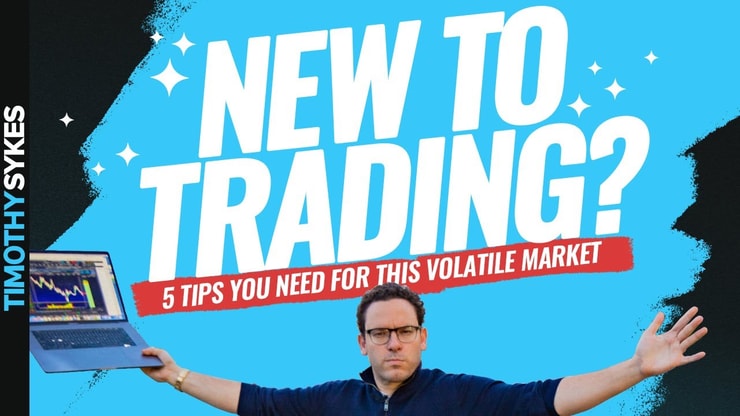


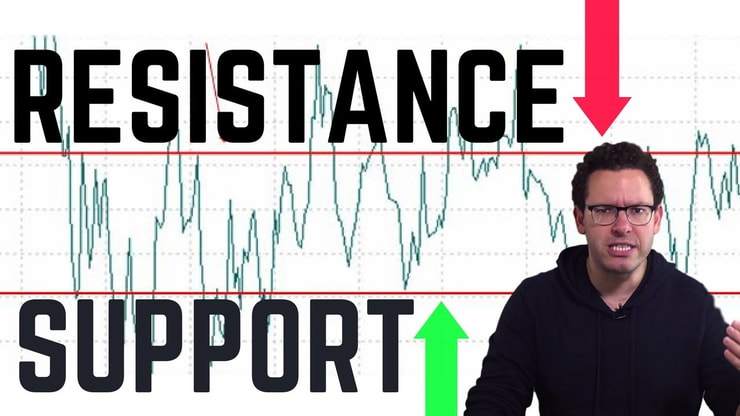

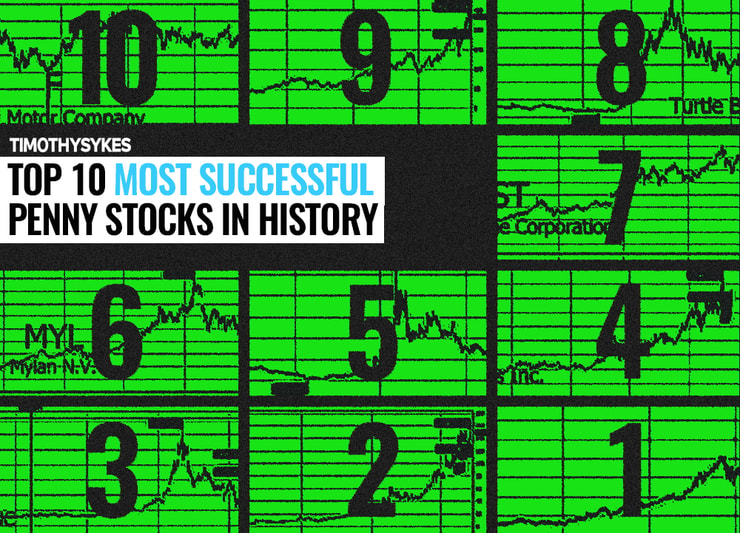





Leave a reply